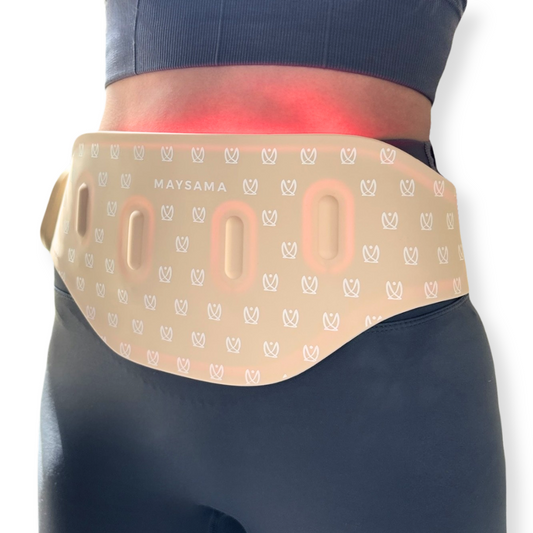
Green Tea has found its place in skincare in recent years but its South African cousin, Green Rooibos Tea, is hot on its tail. Whilst native to different countries and from a different plant origin, Green Rooibos has a similar phytochemical profile to Green tea but is caffeine free! So, is Green Rooibos the new Green Tea? And what skin benefits does it have to offer over our green tea superhero?
Green Tea comes from the plant Camellia sinensis, which is native to China and contains multiple bioactive compounds with reported anti-aging effects, including caffeine, vitamins, and polyphenols. The most abundant polyphenol in green tea is the catechin epigallocatechin-3-gallate (EGCG). Many studies support that EGCG has antioxidant, photoprotective, immunomodulatory and anti-inflammatory properties.

Green Rooibos comes from the herb Aspalathus linearis, native to South Africa. Like green tea, it is harvested from the fresh green, ‘unfermented’ leaves and has a much higher polyphenolic content because the flavonoids have not been destroyed by oxidation. Studies have demonstrated that rooibos has potent antioxidant, immunomodulating, and chemopreventive effects. Rooibos contains a plethora of polyphenols, with 187 compounds in total but is considered unique due to the abundance of the polyphenolic compound aspalathin, a flavonoid which is unique to this herb and largely responsible for its antioxidant potential. Its antioxidative effect has also been attributed to the presence of water-soluble polyphenols such as rutin and quercetin. In addition, rooibos is rich in the antioxidant enzyme Superoxide dismutase and loaded with Alpha Hydroxy Acids (AHAs) and zinc important for anti-aging, as well as many minerals and Vitamin D needed for skin health.

So, let us take a closer look at how green tea and green rooibos tea compare.
Antioxidant Protection and Repair
Oxidative stress occurs when the natural antioxidant defence mechanisms of the body, made up of antioxidant enzymes like Superoxide dismutase and catalase and small antioxidant molecules like glutathione, becomes overwhelmed by free radicals. These free radicals cause damage to lipids in cell membranes, that then sets off a chain reaction, depleting mitochondrial function and eventually leading to cell death.

Wrinkles are the direct result of accumulation of free radicals, decreased levels of collagen, collagen breakdown and loss of barrier function. Collagen fibres are broken down by enzymes, known as Matrix Metalloproteinases or MMPs, which can be induced by UV radiation and other environmental factors.
Antioxidants serve as free radical scavengers, donating an electron to free radicals and rendering them harmless. Topical application of antioxidants not only help to fight free radical damage but decrease the induction of MMPs, helping to protect collagen fibres from enzymatic action.
‘Green’ tea phytochemicals are a potent source of exogenous antioxidants that can nullify excess free radicals and diminish the impact of photoaging. A high antioxidant potential, however, does not always mean that an antioxidant is bioavailable, to fight oxidative damage inside the cell where free radicals are produced. There are several factors that determine bioavailability. Firstly, how well can an antioxidant permeate the lipid cell membrane? And secondly, what fate awaits the antioxidant when it enters the cell? Antioxidants can be rendered inactive by enzymes or rejected from the cell by efflux proteins that recognise them as foreign.
Some antioxidants, like Vitamin C (L-Ascorbic Acid) and Trolox (soluble Vitamin E) are weakly permeable through the cellular lipid membrane. Studies at the Nelson Mandela Institute in South Africa show that both green tea and rooibos have excellent bioavailability, which means that they can penetrate the cell membrane and accumulate inside the cell. What is more, they are strongly bioactive, performing their antioxidant function within the cell and preventing the incidence of cell death from oxidative stress.

But just a minute! We know that continued exposure to free radicals causes oxidative stress and prolonged oxidative stress can lead to cellular damage. The ultimate consequence of unrepaired cell damage is cell death, also known as apoptosis. So, surely a better measure of true antioxidant potential is protection against cell death?
And this is where tea extracts outperform some better-known antioxidants. Analysis shows that the level of protection offered by green tea and green rooibos against cell death is far superior to that offered by resveratrol and vitamin E.

Supporting the Cell’s Natural Antioxidant Pathways
Cells have their own natural antioxidant pathway, made up of antioxidant enzymes, like Superoxide dismutase and catalase, low molecular weight antioxidants, like glutathione, and a whole host of signalling molecules. These intrinsic defence mechanisms however become less effective with age, so supplementation with antioxidants from diet and skincare can help to boost cellular protection and repair damage.
Independent from their free radical scavenging activity, tea polyphenols, in particular green tea and green rooibos tea, have been shown to stimulate the natural antioxidant pathways that exist within a cell, enhancing the cells own capacity to resist oxidative stress. This mechanism appears to be unique to tea extracts. Resveratrol and Vitamin E do not support the cells natural antioxidant network. In fact, studies found that they have a cytotoxic effect, leading to an increase in cell death induced by oxidative stress.

Anti-inflammatory
With antioxidant capacity comes anti-inflammatory properties. So, it is perhaps not surprising that green tea and green rooibos tea have shown that they can help with inflammatory conditions such as rosacea, psoriasis and acne.
One of the adverse effects of UVB radiation is the increased production of signalling proteins by keratinocytes, the main cells in the epidermis. The release triggers an inflammatory response and cell proliferation. Plant polyphenols can modulate UVB-induced inflammatory signalling pathways associated with oxidative stress and DNA damage in skin. Green rooibos and green tea help to reduce inflammation, which in turn protects cells against oxidative stress and cell death.
Wound Healing

Distinctly characterising it from green tea, rooibos is known as a healing herb. Its therapeutic properties have been exploited for centuries by the indigenous Khosian tribe in South Africa, long before it became popular as a tea beverage.
Recent studies show that, independent of its antioxidant function, rooibos plays an important role in dermal wound healing. Wound healing is characterised by three specific stages; inflammation, proliferation and tissue remodelling. Green and fermented rooibos are seen to present distinctly different properties and contribute to different stages of healing.
Red rooibos has a pro-inflammatory nature, which, evidence suggests, helps to speed up the inflammatory stage of wound healing. Researchers from the NMI University report that topically applied red rooibos helps with the recruitment of macrophages, which play a critical part in the repair of skin by clearing damaged tissue constituents, killing pathogens and producing a variety of growth factors that induce collagen deposition. Red rooibos activates these immune cells, accelerating tissue repair and speeding up the healing process.
Green rooibos, on the other hand, does not exhibit pro-inflammatory properties, but instead contributes greatly to the latter stages of wound healing, inhibiting cell division of macrophages and assisting tissue remodelling.

The healing potential of rooibos has recently been studied in relation to chronic wound healing. Diabetic wounds are characterised by hyper-inflammation, which contributes to oxidative stress and can trigger cell death. Wound healing in healthy patients is helped by dermal fibroblasts that provide essential components for wound healing. In chronic wounds however, excessive death of these cells by apoptosis can impair the healing process. When these cells are pre-treated with rooibos, the incidence of oxidative stress is reduced and dermal fibroblasts survival rate is increased. Green rooibos demonstrates that it offers a greater protective capacity against oxidative stress induced cell death, a property which can enhance wound healing.
Anti-aging

One of the most visible signs of skin aging is skin wrinkling, which is the result of decreased levels of collagen and accelerated collagen breakdown. During the aging process, collagen is broken down by enzymes, called MMPs, which can be induced by UV radiation and other environmental aggressors. Eventually, this leads to the accumulation of fragmented collagen fibres that prevent normal collagen formation.
Research confirms that rooibos can significantly inhibit the formation of Advanced Glycation End Products (A.G.E). Glycated collagen can lead to inflammation and destroy a functional collagen matrix, contributing to an aged appearance. So, the inhibition of AGE formation in collagen is an important mechanism for the protective effects of tea catechins and flavonoids against skin ageing.
In fact, the literature shows that rooibos exhibits at least ten anti-aging actions, including reducing lipid and protein degradation and regulating glutathione metabolism, helping to ensure levels of this important endogenous antioxidant for our cellular defence mechanisms. Also linked to our body's natural defence systems and aging, chronic oxidative stress decreases the activities of key antioxidant enzymes, like Superoxide dismutase and Catalase. Treatment with rooibos tea has been shown to weaken the inhibitory effect on these enzymes, restoring our natural antioxidant systems and bolstering rooibos’ pro-aging benefits.
Fat Protection

Perhaps the most novel aspect of green rooibos is its ability to protect and repair preadipocytes, the main fat cells in adipose tissue. Loss of fat tissue in the face can lead to an altered cosmetic appearance (sunken eyes, fine lines and wrinkles and skin folds). Studies at the Nelson Mandela Institute show that rooibos plays an important role in protecting preadipocytes and can partially restore the function of these aged cells. The preservation of subcutaneous adipose tissue in the face may help preserve a more youthful complexion.
No other cosmetic ingredient has been shown to target preadipocyte function in a positive manner. A number of journal articles report that green tea and ECGC inhibit lipid accumulation and may even induce apoptotic cell death in adipose tissue. While this may be great news for anti obesity treatment, it is counter-intuitive toward expanding the fat layer beneath the skin to improve the appearance of wrinkles.
Caffeine Free

There is some evidence that caffeine inhibits collagen biosynthesis in skin cells through the inhibition of a key enzyme, prolidase, which plays an important role in the recycling of proline for collagen synthesis. The same study showed that caffeine also has an inhibitory effect on DNA synthesis by the inhibition of other components that function as collagen receptors in skin cells. Whilst of interest, this data should be taken in content with several studies that support green tea supplements collagen and elastin fibre content production and suppresses collagen degrading enzyme MMP-3 production in the skin, conferring an anti-wrinkle effect.
If in any doubt, the good news is that rooibos is caffeine free! Offering similar anti-aging modality to green tea, but without the risk of caffeine-induced inhibition of collagen synthesis, rooibos is a winner for sure.
Anti-Mutagenic

Green tea is known to possess antitumour and photoprotective properties, suggesting it could reverse the early stages of skin cancer development. EGCG is known to selectively affect the growth of epithelial cancer cells by decreasing mitochondrial respiratory chain protein level and activity, leading to a reduction in cellular ATP, cell cycle arrest and apoptosis.
Independent studies undertaken at Cape Peninsula University of Technology (CPUT), show that topical treatment with rooibos polyphenols are also likely to play an important role during the early stages of cancer development by targeting the viability of precancerous cells. In these studies, green rooibos showed a similar total polyphenolic content, antioxidant capacity and reduction in skin cell viability to green tea, indicating a similar mode of action. Evidence shows that, like green tea, green rooibos seeks out and removes UVB damaged, precancerous cells, and removes these cells by selectively killing them. The removal of UVB damaged cells delays their progression into a tumour.
Interestingly, whilst green tea and green rooibos tea proved equally effective at treating premalignant cells, rooibos aqueous extract was more active than green tea extract at killing malignant cells in this study.
Rooibos Round-up

In recent years, green rooibos has found application in the pharmaceutical industry to treat Type 2 diabetes. Effective in reducing elevated blood glucose levels, rooibos and its unique flavonoid, aspalathin, not only improve glucose uptake but improve insulin resistance, a major factor underlying the development of Type 2 diabetes. This discovery lead to the production of an aspalathin-enriched green rooibos extract as a phytopharmaceutical.
A research collaboration between British beauty brand, MAYSAMA, and the NMI University confirm that this green rooibos phytopharmaceutical is a true bioactive ingredient, relevant for cosmetic application. Our studies show that it is a potent antioxidant with superior bioavailability, which can undo oxidative damage at the cellular level and improve outcomes for cell protection and repair. Adding to its reparative capability, this green rooibos phytochemical works in harmony with the cell to bolster the cell's own antioxidant defence pathways, significantly improving cell survival rate.
MAYSAMA are the only skincare brand to formulate with pharmaceutical grade green rooibos. The patented extraction process used in the preparation of their Green Rooibos Extract enhances the aspalathin content, producing an Active Pharmaceutical Ingredient [API] with 70 x the antioxidant capacity of standard rooibos.
So, is green rooibos the new green tea? Well, it is certainly a worthy alternative. Green tea and green rooibos tea have a lot in common, largely due to their high polyphenolic content and action of tea antioxidants. But, unlike green tea, rooibos is a tisane or herbal tea, which brings with it medicinal properties and a character all of its own.
Rooibos has impressive dermal wound healing properties, which contribute to its therapeutic potential and its reputation as a healing herb may even rival that of Centella asiatica, which is already popular in skincare. If anti-aging is your goal, then rooibos’ novel property of ‘fat protection’, helping to preserve skin fullness, certainly has merit for maintaining a more youthful complexion. Last, but not least, our caffeine-free friend eliminates any chance of inhibitory effects of caffeine on collagen production and will be sure to leave your collagen receptors intact!
MAYSAMA Green Rooibos Pressed Serum is a unique formulation, hero-ing aspalathin-enriched, pharmaceutical grade green rooibos extract for potent antioxidant protection, 3% niacinamide and a whole host of actives inspired by Korean beauty. Check out www.maysama.com for more information.






